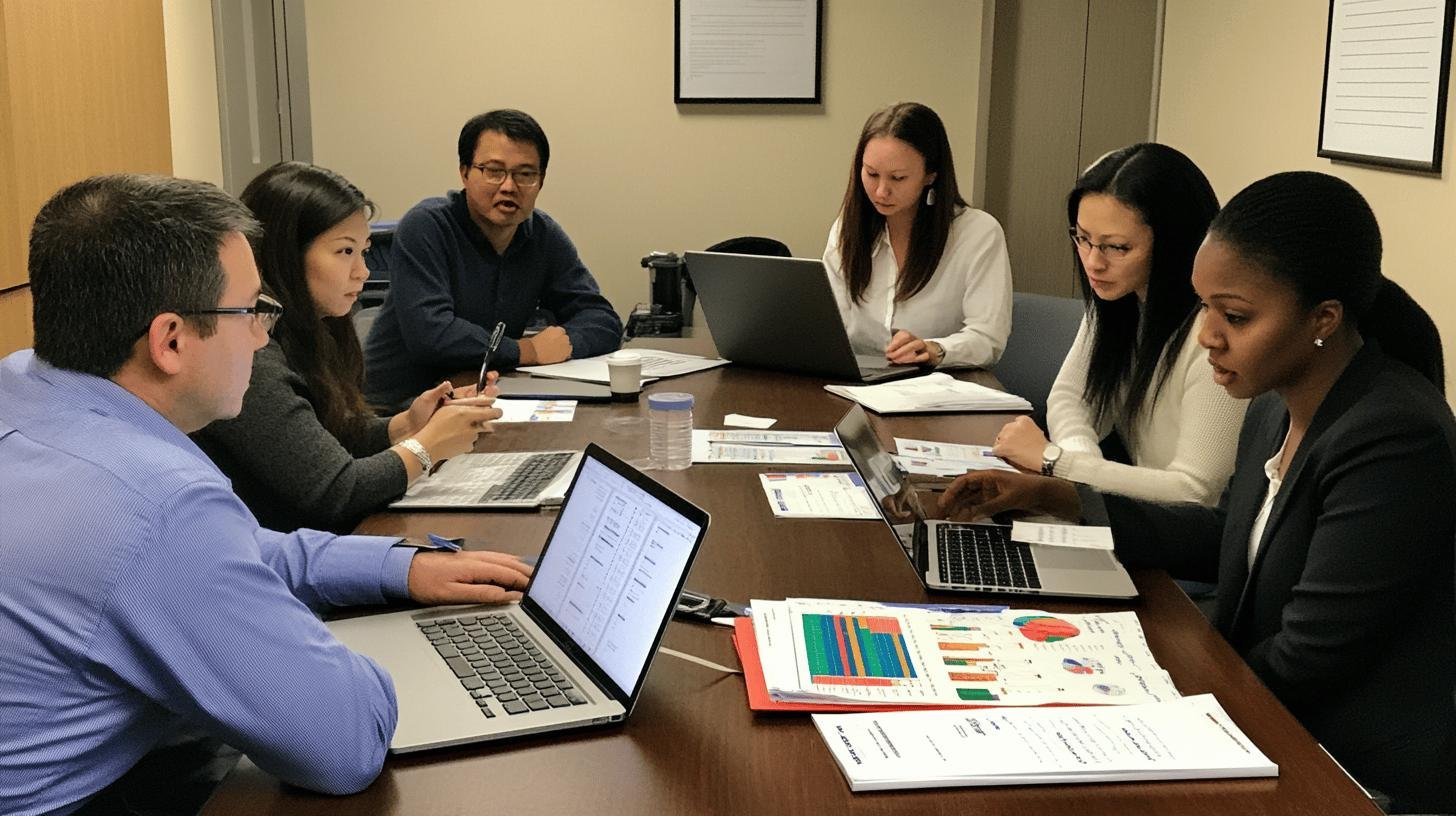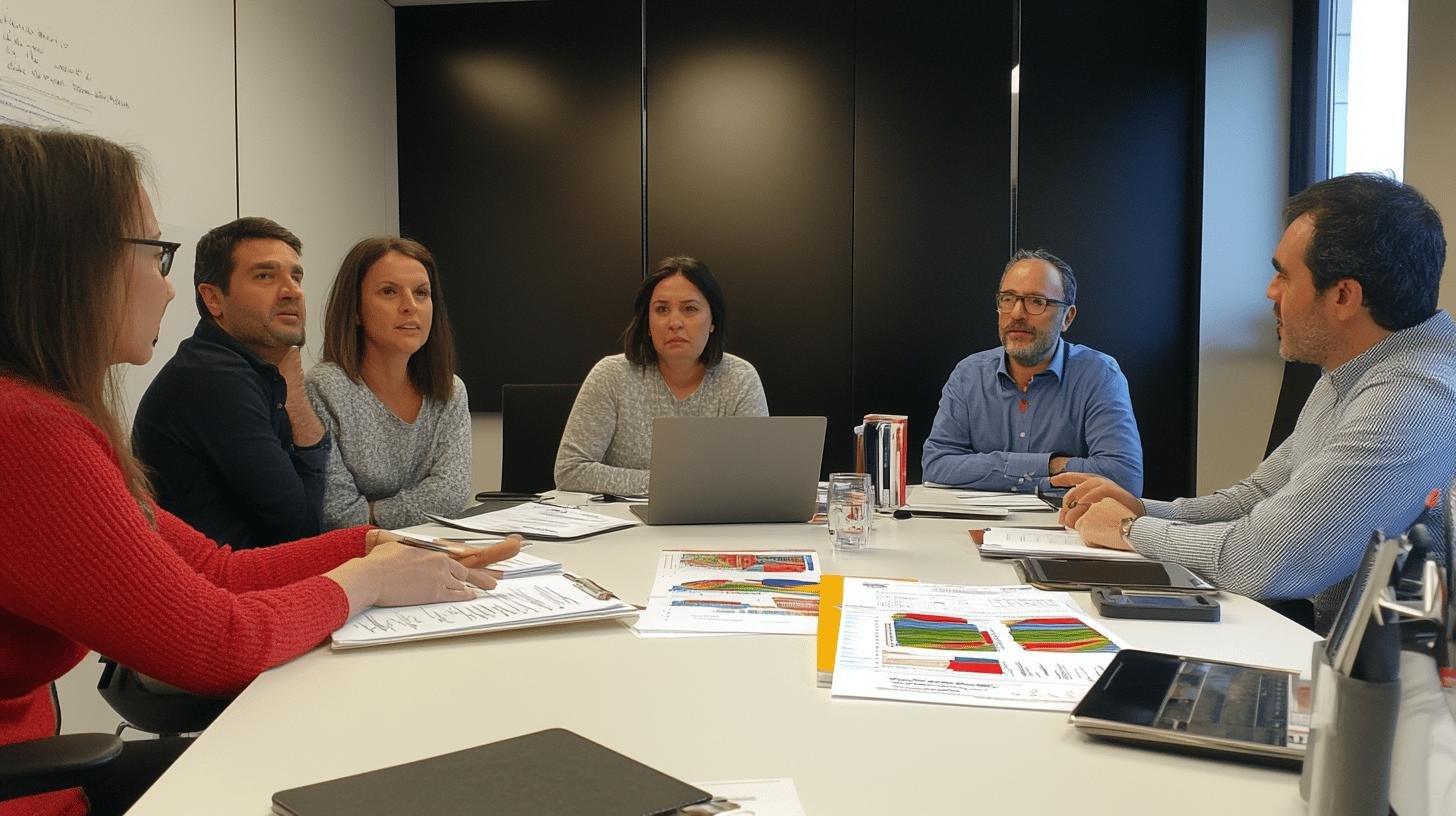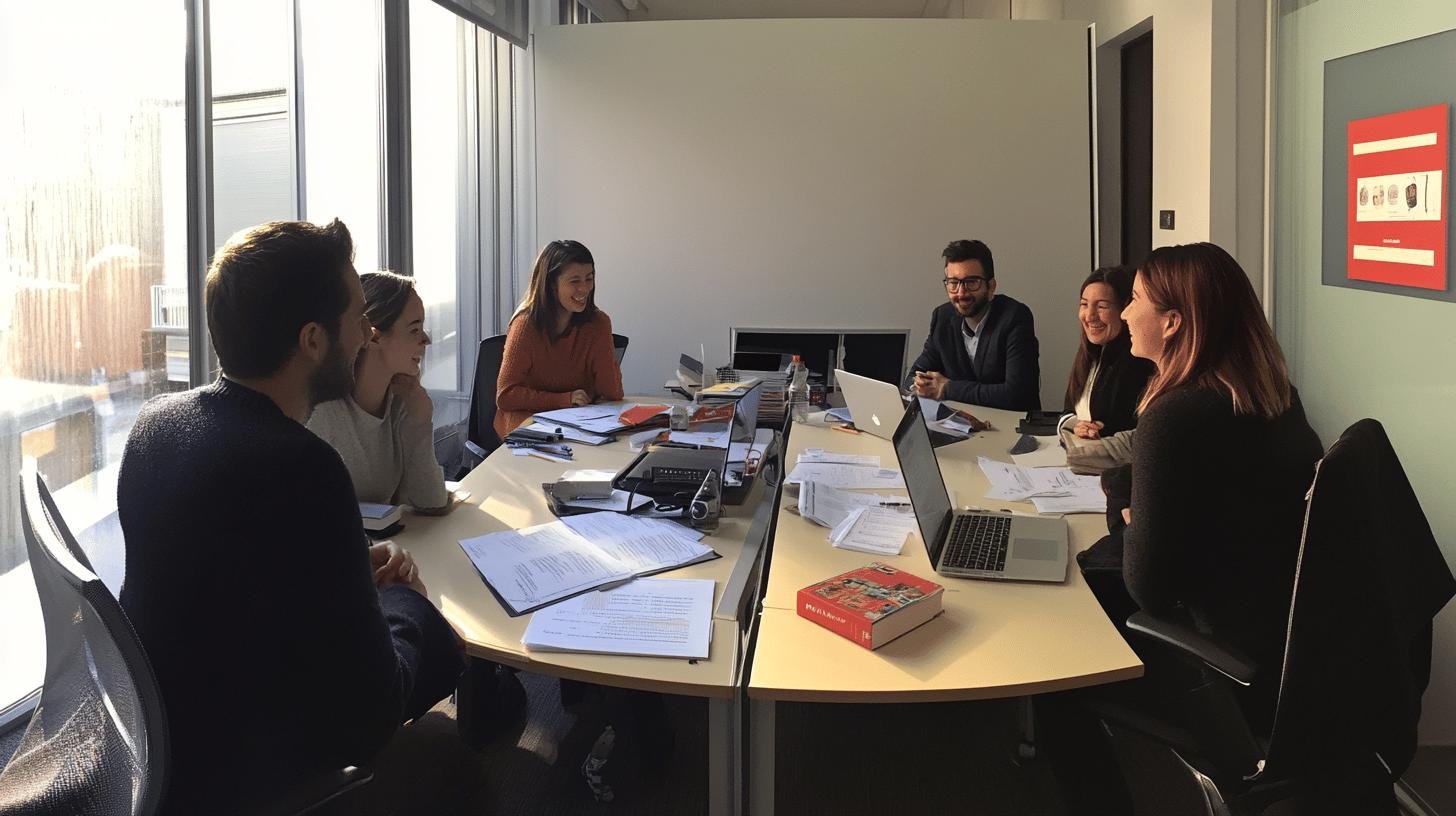TL;DR:
- What is ERM? A comprehensive approach integrating risk strategies with business goals.
- Key Principles: Risk Identification, Assessment, Mitigation, Communication, Continuous Monitoring.
- Importance: Prevents financial losses, compliance issues, and legal problems; enhances decision-making.
- Benefits: Improves performance, efficiency, transparency, resource allocation, compliance.
- Framework Components: Culture and Governance, Strategic Planning, Risk Management Cycle, Monitoring and Communication.
- Process Steps: Set Goals, Identify Risks, Assess Risks, Develop Strategies, Implement Controls, Continuous Monitoring.
- Applications: Effective in Banking, Healthcare, Insurance, Manufacturing.
- Challenges: Cultural shifts, process disruptions, system changes.
- Best Practices: Tailor ERM, foster risk-aware culture, involve stakeholders, continuous training, leverage technology.
Is your business ready for the unexpected? Enterprise Risk Management (ERM) might just be the secret sauce you’re missing. ERM is not just another buzzword; it’s a vital strategy that integrates risk management with your company’s goals and operations. It’s about spotting risks and keeping everyone on the same page to dodge issues before they hit hard.
This blog will unravel what ERM truly is and why it’s crucial for keeping your business steady in uncertain times. Dive into the world of ERM and discover how it can transform your strategy and ensure success.
Understanding Enterprise Risk Management
Enterprise Risk Management (ERM) is a broad approach that combines traditional risk strategies with internal controls. It aligns with an organization’s strategic and operational goals. ERM helps set objectives matching risk tolerance and boosts communication across business units.
ERM is crucial because it aligns risk management with overall business goals and strategies. This alignment helps organizations foresee and prepare for risks, resulting in informed decisions and better resource use. ERM fosters a unified departmental approach, promoting a proactive risk management culture.
Key ERM principles are:
- Risk Identification: Spotting risks that may affect the organization.
- Risk Assessment: Gauging the likelihood and impact of these risks.
- Risk Mitigation: Creating strategies to lessen or handle risk effects.
- Communication and Coordination: Keeping all departments informed and synchronized.
- Continuous Monitoring: Regularly reviewing and tweaking strategies as needed.
ERM enhances business decisions and governance through its structured framework. It allows companies not only to manage risks but also to see them as chances for growth and innovation. With ERM, businesses can better handle uncertainties, leading to stronger and more resilient operations.
The Importance of Enterprise Risk Management

Enterprise Risk Management (ERM) provides a thorough framework to identify, assess, and manage risks. This holistic view fosters department collaboration and aligns risk management with organizational objectives.
How does ERM help avoid potential risks? By identifying and addressing risks early, ERM helps prevent financial losses, reputational harm, compliance issues, and legal problems. This structured approach reduces surprises and enhances an organization’s ability to react to unexpected events.
| Benefit | Description |
|---|---|
| Improved Business Performance | ERM aligns risk strategies with business goals, boosting performance. |
| Increased Organizational Effectiveness | Streamlined processes and better communication improve efficiency. |
| Standardized Risk Reporting | Uniform reporting enhances transparency and decision-making. |
| Better Resource Allocation | ERM prioritizes resources based on risk assessments. |
| Enhanced Compliance Coordination | ERM ensures regulation compliance and reduces risks. |
ERM also improves risk reporting and resource distribution. Consistent risk reports aid decision-making, directing resources where needed most. With ERM, companies enhance decision-making and corporate governance.
Key Components of the Enterprise Risk Management Framework
ERM frameworks, like the COSO ERM Framework, provide structured risk management. They ensure all risks align with strategic objectives, consisting of key components that form effective ERM strategies.
Company Culture and Governance
Culture and governance shape how risks are seen and managed. A risk-aware culture encourages risk communication at all levels. Governance ensures processes align with organizational goals.
Strategic Planning
Strategic ERM planning aligns goals with risk tolerance. By integrating risk into planning, organizations proactively tackle challenges and seize opportunities. This ensures risk management is integral to strategy.
Risk Management Cycle
The risk management cycle is central to any ERM framework. It involves identifying, assessing, mitigating, and responding to risks. This ongoing cycle helps organizations adjust strategies for risk management.
Monitoring and Communication
Continuous monitoring and communication are important for ERM success. Reviewing activities ensures effectiveness, while communication keeps stakeholders informed. This transparency builds trust and collaboration.
By combining these components, frameworks like COSO help manage risks effectively. Each part plays a distinct role, but together, they offer a comprehensive approach. This leads to better decisions, improved resilience, and better goal alignment.
The Enterprise Risk Management Process

The ERM process manages risks across an organization. It aligns risk actions with strategic aims, stopping surprises and making decisions better.
- Setting Goals: Define clear goals that match risk tolerance. These goals set a risk management benchmark.
- Identifying Risks: Spot potential events or conditions that could harm the organization, setting the stage for understanding threats.
- Assessing Risks: Evaluate the chance and possible impact of risks, helping prioritize them by significance.
- Developing Strategies: Craft strategies to handle risks; this includes avoiding, mitigating, or accepting them based on priority.
- Implementing Control Activities: Take actions to prevent or detect risks, ensuring responses are effective.
- Continuous Monitoring: Regular reviews and updates ensure risk management stays effective amid new risks or changes.
Effective communication is vital in the ERM process. Engaging stakeholders ensures coordination, fostering a risk-aware culture and leading to resilient operations.
Examples and Applications of Enterprise Risk Management in Business
ERM works in various sectors to manage risks, improve decision-making, and boost efficiency. It adapts to different environments, tackling unique challenges:
- Banking: Manages credit and market risks to ensure stability and compliance.
- Healthcare: Addresses patient safety and data security, protecting information and care quality.
- Insurance: Evaluates risks in underwriting and claims, reducing financial losses.
- Manufacturing: Identifies supply chain disruptions, maintaining production continuity.
ERM impacts these industries by providing a structured approach. It helps organizations proactively tackle challenges, leading to efficiency and informed decisions.
Challenges and Best Practices in Enterprise Risk Management Implementation

Implementing ERM poses several challenges like cultural, process, or system changes, which are costly and time-consuming. Cultural shifts need support at all levels, while process changes might disrupt operations and system changes require investment.
Best practices include:
- Tailoring ERM Programs: Customize ERM to fit company needs.
- Fostering a Risk-Aware Culture: Encourage organization-wide risk management understanding.
- Involving All Stakeholders: Engage all departments for a comprehensive approach.
- Continuous Training and Education: Keep everyone updated on risk strategies.
- Leveraging Technology: Use tools to streamline processes.
These practices enhance ERM implementation. Tailoring programs maintains relevance, fostering culture for proactive risk handling, involving stakeholders for diverse input, continuous training, and technology for innovation, building resilience.
Final Words
Enterprise Risk Management (ERM) is a vital tool for aligning risk management with strategic goals. It offers a structured way to identify, assess, and manage risks across an organization. Understanding what is enterprise risk management helps businesses avoid financial pitfalls and maintain a solid reputation.
Key principles and structured frameworks, like COSO, offer a roadmap for effective ERM implementation. By navigating the steps of the ERM process, companies can better communicate and coordinate their risk strategies. Adopting ERM ensures a proactive approach to managing uncertainty, ultimately strengthening business resilience and decision-making.
FAQ
What is the meaning of enterprise risk management?
Enterprise Risk Management (ERM) is a strategy that integrates risk management with internal controls to align with an organization’s business goals. It promotes communication and collaboration across business units to ensure effective risk management.
Why is ERM important?
ERM is important because it provides a holistic view of risks, helps avoid financial losses, improves resource allocation, and enhances compliance. It strengthens corporate governance and streamlines risk management efforts across all departments.
What are examples of enterprise risk management?
Banks use ERM to manage credit and market risks, while healthcare organizations reduce patient safety risks. Insurance firms use ERM to handle underwriting and policyholder risks, and manufacturers address supply chain disruptions to ensure continuity of production.
What is the enterprise risk management process?
The ERM process involves setting clear organizational goals that align with risk tolerance. It also includes identifying potential risks, assessing their impact and likelihood, developing strategies for risk mitigation or acceptance, implementing control measures, and continuously monitoring the effectiveness of these strategies.
What are the key components of an ERM framework?
ERM frameworks like COSO include several key components such as fostering a risk-aware company culture and governance, aligning strategic planning with business objectives, guiding risk identification and mitigation through the risk management cycle, monitoring risks continuously, and promoting transparent communication across the organization.
What are the challenges in implementing enterprise risk management?
The challenges in implementing ERM include cultural adjustments within the organization, the need for system changes, and the cost and time investments required. Additionally, resistance from staff and the complexity of standardizing processes can pose obstacles to successful ERM implementation.
What are best practices for enterprise risk management?
Best practices for ERM include tailoring programs to fit the specific needs of the organization, fostering a risk-aware culture, involving all stakeholders in the risk management process, providing regular training and updates to employees, and ensuring effective communication strategies are in place to keep everyone informed and aligned.

